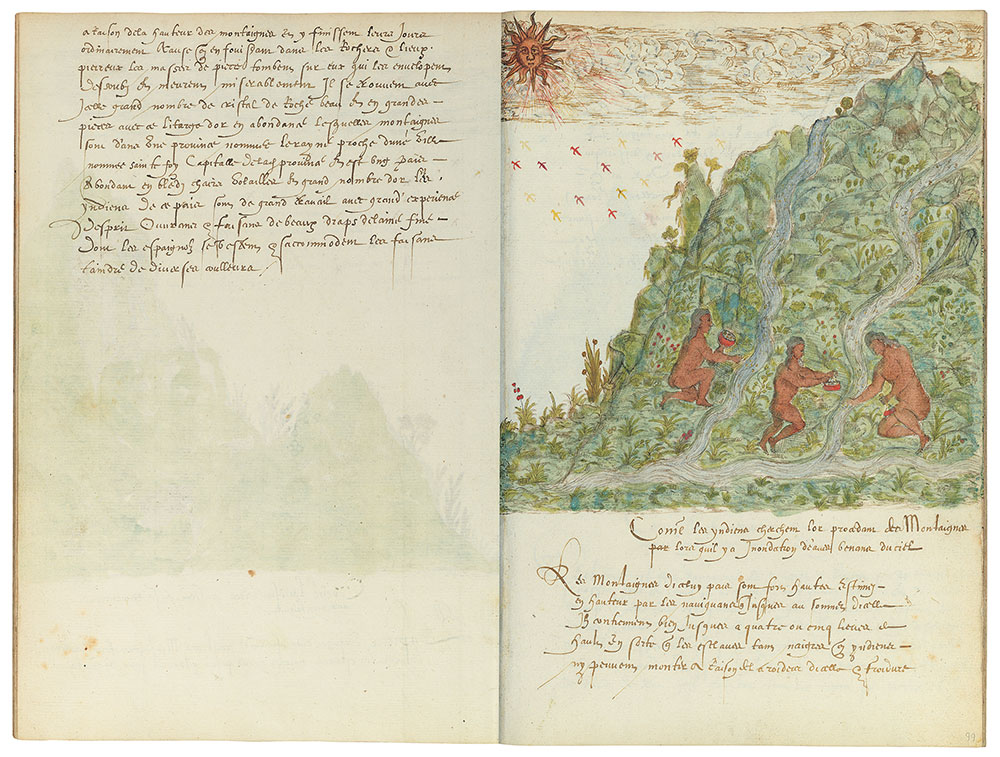Folios 98v–99r

Histoire Naturelle des Indes
Illustrated manuscript
Bequest of Clara S. Peck, 1983
In 1983, The Morgan Library & Museum received, as the bequest of Clara S. Peck, an extraordinary volume whose beautiful paintings and descriptions document the plant, animal, and human life of the Caribbean late in the sixteenth century. Spaniards had already begun to exert influence over the indigenous people of the area when explorers from England and France arrived, among them Sir Francis Drake. The volume, known as the Drake Manuscript and titled Histoire Naturelle des Indes when it was bound in the eighteenth century, gives us a wonderful picture of daily life at the time of Drake's many visits to the region. Although Drake's connection to the manuscript is uncertain, he is mentioned on more than one occasion by the authors. Drake himself is known to have painted, but none of his work survives.
Contents: 199 images of West Indian plants, animals and human life, with accompanying manuscript captions written in late sixteenth-century French.
Medium: Most of the illustrations consist of a black chalk underdrawing and a combination of pen and brown ink with watercolor; on some images selected areas have also been glazed with a gum.
Binding: Bound or rebound in brown leather in the late 18th century.
Pagination: Penciled folio numbers (1–125) in lower right corner of each page were added by The Morgan Library & Museum. Folios 92v–93, 93v–94, and 95v–96 are fold-out leaves.
Continued from fol. 98
by reason of the height of the mountains. They usually end their days there because while digging in the rocks masses of stone fall on them which pin them underneath and they die miserably. There also is found a great quantity of beautiful rock crystal in large pieces richly adulterated with gold. These mountains are located in a province called Lerayne [Colombia] close to a city called Santa Fe, the capital of the province. This is a region rich in wheat, meat, fowl, and plenty of gold. The Indians of this region are good workers with great skill and intelligence, working and making beautiful cloth of fine wool with which the Spaniards dress and fit themselves out, having it dyed in various colors.
Come Les Yndiens Cherchent Lor Procedant Des Montaignes Lors Quil Y Ajnondation De'Aues Venans Du Ciel (How the Indians Try to Find Gold Coming from the Mountains When There are Floods from the Sky)
The mountain of this region are very high, estimated by the navigators to be close to four or five leagues high up to their peaks, so that the slaves, negroes as well as Indians, are unable to climb them on account of their steepness and cold temperature.